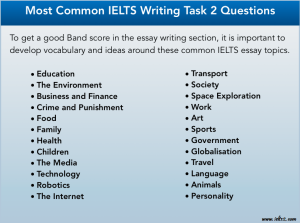نمونه سوالات اسپیکینگ آیلتس درباره افراد بی خانمان (پارت 1 2 3)
در این بخش بیش از 20 مورد از نمونه سوالات اسپیکینگ آیلتس نمره 9 درباره “افراد بی خانمان” را با هم میبینیم. این مجموعه از آخرین سوالات گزارش شده از سنترهای برگزار کننده آیلتس در ایران و خارج از کشور مربوط به پارت 1، 2 و 3 می باشند و شانس تکرار آن ها در آینده بالاست. در ادامه مطلب همچنین نکات گرامری، لغات و دلایل دریافت نمره 9 را به طور مشخص توضیح داده ایم تا راهنمایی برای علاقمندان باشد. 1000 نمونه سوالات اسپیکینگ آیلتس با جواب PDF پارت 1 2 3 پیشنهاد بعدی ما به شما عزیزان است.
نمونه سوالات اسپیکینگ آیلتس درباره افراد بی خانمان (پارت 1)
Why do you think some people become homeless?
Many factors contribute to homelessness, including financial difficulties, job loss, mental health issues, and family breakdowns. Some individuals may also experience substance abuse problems or struggle with rising housing costs. In many cases, a lack of government support and affordable housing exacerbates the situation. While some people manage to recover through shelters and social programs, others remain stuck in a cycle of poverty and instability, making it difficult to reintegrate into society.Is homelessness a common issue in your country?
Unfortunately, homelessness is a growing problem in many urban areas due to the rising cost of living and inadequate social support systems. While governments and charities provide assistance through shelters and food programs, these solutions are often temporary. Many homeless individuals struggle with unemployment and mental health issues, making it harder to find stability. Public awareness and policy reforms are necessary to address this crisis effectively and ensure that everyone has access to safe housing.Have you ever interacted with a homeless person?
Yes, I have encountered homeless individuals in public spaces, and I always try to be compassionate. I once spoke to a man who had lost his job and was struggling to find stable employment. His story was heartbreaking, but it highlighted the harsh reality many people face. I believe that small acts of kindness, like donating food or supporting charities, can make a difference in their lives.What do you think is the main cause of homelessness?
The primary cause of homelessness varies, but economic hardship is one of the most significant factors. High unemployment rates, lack of affordable housing, and personal crises, such as domestic violence, often push people onto the streets. Additionally, mental health issues and substance abuse can make it difficult for individuals to maintain stable living conditions. Without proper social support and rehabilitation programs, homelessness remains a persistent issue in many societies.Do you think homelessness is more common in cities or rural areas?
Homelessness is more prevalent in cities due to higher living costs and limited affordable housing. Urban areas attract people seeking better job opportunities, but competition can be fierce, leaving many unemployed and homeless. In contrast, rural areas may have fewer services, but tight-knit communities sometimes offer better support networks. However, rural homelessness is often hidden, as people may live in unstable housing rather than on the streets.Should the government be responsible for solving homelessness?
Yes, the government plays a crucial role in addressing homelessness. Policies that promote affordable housing, job opportunities, and mental health support can prevent individuals from becoming homeless. Additionally, social programs and shelters provide essential resources for those in need. While charities and communities can help, long-term solutions require governmental intervention to ensure that everyone has access to basic necessities and a stable living environment.How does homelessness affect society?
Homelessness has widespread social and economic consequences. It increases pressure on public services such as healthcare and law enforcement while also contributing to urban poverty and crime rates. Additionally, it affects the overall quality of life in communities, as public spaces become overcrowded with people lacking proper shelter. Addressing homelessness benefits society as a whole by creating a safer, more stable environment for all citizens.What can individuals do to help homeless people?
Individuals can support homeless people in various ways, such as donating food, clothing, or money to charities and shelters. Volunteering at soup kitchens or offering job training can also help them reintegrate into society. Additionally, advocating for policy changes and raising awareness about homelessness can lead to more long-term solutions. Simple acts of kindness, like acknowledging their presence and treating them with dignity, can also make a significant difference.How do you feel when you see a homeless person?
Seeing a homeless person often makes me feel a mix of sadness and helplessness. It’s heartbreaking to witness people struggling to meet their basic needs, especially in affluent societies. However, I try to channel my emotions into positive actions, such as donating or supporting initiatives that address homelessness. I believe empathy and social responsibility are essential in making a meaningful impact.Do you think homelessness can ever be completely eliminated?
While eliminating homelessness entirely is a difficult challenge, significant progress can be made with the right policies and support systems. Governments must invest in affordable housing, job creation, and mental health services to address the root causes. Public awareness and community efforts can also contribute to long-term solutions. While some individuals may still struggle due to personal circumstances, a society with strong social support can greatly reduce homelessness.
نمونه سوالات اسپیکینگ آیلتس درباره افراد بی خانمان (پارت 2)
Describe a time when you saw a homeless person and how it affected you.
You should say:
Where and when you saw this person
What they were doing
How you felt about the situation
And explain what you think should be done to help homeless people
Answer:
A few months ago, I encountered a homeless man outside a busy train station in my city. He was sitting on the pavement with a small cardboard sign that read, “Hungry and in need of help.” He looked frail and exhausted, wearing tattered clothes that barely provided warmth. Despite the cold weather, he remained silent, only occasionally looking up at passersby with a hopeful expression.
Seeing him in such a vulnerable state deeply affected me. I felt a strong sense of helplessness and guilt, knowing that while I was going home to a warm meal and a comfortable bed, he had no place to go. I approached him and offered some food and water, which he accepted with a grateful smile. We exchanged a few words, and he told me he had lost his job due to the pandemic and couldn’t afford rent anymore. His story was heartbreaking and made me reflect on the fragile nature of financial security.
I believe that homelessness is a societal issue that requires collective action. Governments should invest in affordable housing and job programs to help individuals rebuild their lives. Additionally, communities should be more supportive by volunteering at shelters and donating necessities. If we all contribute, even in small ways, we can create a more compassionate society where fewer people have to endure such hardships.

نمونه سوالات اسپیکینگ آیلتس درباره افراد بیخانمان (پارت 3)
What are the biggest challenges homeless people face?
Homeless individuals face numerous hardships, including lack of shelter, food, and medical care. Without stable housing, it’s incredibly difficult to find employment, leading to a vicious cycle of poverty. They often suffer from malnutrition and untreated medical conditions due to limited access to healthcare. Mental health issues, such as depression and anxiety, are also common, exacerbated by social isolation and stigma. Additionally, homeless people are at risk of violence, theft, and harsh weather conditions. Public perception often worsens their situation, as many view them as a burden rather than individuals in need of support. Without effective government policies and community assistance, breaking free from homelessness remains a significant challenge for many.How can education help reduce homelessness?
Education is a powerful tool in preventing homelessness by equipping individuals with essential skills for stable employment. Vocational training and financial literacy programs can teach people how to manage money, avoid debt, and secure better job opportunities. Additionally, schools can promote awareness about homelessness, helping to reduce stigma and encourage social responsibility. Early intervention programs for at-risk youth can also prevent future homelessness by offering guidance and support. Furthermore, governments should provide affordable education and scholarship programs for low-income individuals, enabling them to improve their living conditions. By ensuring equal access to education, society can significantly reduce the number of people who end up homeless due to economic instability.Should homeless people be given government housing for free?
Providing free housing may not always be sustainable, but affordable housing programs can be an effective solution. Governments should offer subsidized housing combined with employment training and mental health support to help individuals regain independence. In some cases, temporary shelters can act as a stepping stone while people work towards self-sufficiency. However, simply giving free homes without additional assistance might not address the root causes of homelessness. Instead, structured programs that include job placement services, addiction recovery support, and financial management training are more effective in ensuring long-term stability. By combining housing assistance with rehabilitation efforts, governments can provide sustainable solutions to homelessness.What role do charities play in addressing homelessness?
Charities play a crucial role in addressing homelessness by providing immediate relief, such as food, clothing, and temporary shelter. Many organizations also offer healthcare services, counseling, and job training to help individuals reintegrate into society. Additionally, charities raise awareness about homelessness and advocate for policy changes to address its root causes. Unlike government programs, charities can operate more flexibly, responding quickly to urgent needs. However, their resources are often limited, relying on public donations and volunteers. While charities alone cannot eliminate homelessness, their efforts complement government initiatives by offering personalized support and community-based solutions. Collaboration between governments, charities, and local communities is essential to tackling homelessness effectively.Why do some people ignore the homeless?
Many people ignore the homeless due to discomfort, fear, or a lack of understanding. Some assume that homelessness results from laziness or poor choices rather than systemic issues like unemployment and mental health struggles. Others feel overwhelmed, believing their help would make little difference. Additionally, some avoid interaction out of fear for their safety, especially if the homeless person appears aggressive or intoxicated. Society often desensitizes people to homelessness, making it easier to overlook their struggles. To change this, education and awareness campaigns can help people understand the true causes of homelessness and encourage them to support solutions rather than turning a blind eye.What can be done to prevent people from becoming homeless?
Preventing homelessness requires a multi-faceted approach, including affordable housing initiatives, job creation programs, and accessible mental health care. Governments should implement policies that ensure fair wages and rental assistance for low-income individuals. Early intervention programs for at-risk groups, such as domestic violence survivors and unemployed youth, can also help prevent homelessness. Additionally, financial literacy education can teach people how to manage expenses and avoid debt. Charities and community organizations can provide emergency assistance to those at risk of losing their homes. Ultimately, a combination of economic stability, social support, and proactive policies is essential in reducing homelessness rates.Do you think homelessness affects crime rates in a society?
There is often a link between homelessness and crime, but it is complex. While some homeless individuals may engage in petty crimes, such as theft, out of desperation, most do not pose a danger to society. In contrast, homeless people are more often victims of crime, facing harassment, assault, and exploitation. Lack of stable housing can also increase interactions with law enforcement for minor offenses like trespassing or loitering. Addressing homelessness through housing programs, mental health support, and job opportunities can reduce crime rates by providing stability. Instead of criminalizing homelessness, societies should focus on rehabilitation and support to break the cycle of poverty and crime.How do different countries handle homelessness?
Countries adopt various approaches to tackling homelessness. Some, like Finland, use the “Housing First” model, providing permanent housing along with support services. This has significantly reduced homelessness. Other nations rely on temporary shelters and social programs, but these often fail to offer long-term solutions. In developing countries, homelessness is more widespread due to poverty and lack of infrastructure. Some governments focus on criminalizing street living instead of addressing root causes, worsening the problem. The most effective strategies involve a mix of affordable housing, employment opportunities, and mental health care. By learning from successful models, countries can improve their homelessness policies and outcomes.Should homeless people be allowed to stay in public spaces?
This is a controversial issue, as public spaces should be accessible to everyone, but homelessness presents challenges. While homeless individuals have the right to exist in public areas, their presence can sometimes lead to safety concerns, unsanitary conditions, and disruptions. However, simply removing them from these spaces without offering alternatives is not a solution. Instead of criminalizing homelessness, governments should invest in permanent housing, shelters, and rehabilitation programs. If adequate support is provided, fewer people will need to rely on public spaces for survival. The goal should be to address the root causes of homelessness rather than pushing the problem out of sight.Do you think homelessness will ever be completely eradicated?
While eliminating homelessness entirely may be unrealistic, significant progress can be made with effective policies. Countries that invest in affordable housing, mental health care, and employment programs have successfully reduced homelessness rates. However, economic crises, natural disasters, and personal circumstances will always put some individuals at risk. The key is to create strong support systems that prevent long-term homelessness and offer pathways to recovery. If governments, charities, and communities work together, homelessness can be minimized, ensuring that fewer people experience life on the streets. While complete eradication may not be possible, a more compassionate and supportive society can greatly reduce its prevalence.
دلایل رسیدن سطح پاسخ ها به نمره 9 آیلتس
1. دایره لغات گسترده (Lexical Resource)
پاسخ سوالات اسپیکینگ آیلتس درباره افراد بی خانمان در بالا از طیف وسیعی از واژگان پیشرفته و موضوعی استفاده میکنند. مثالها شامل:
- “vicious cycle of poverty” (چرخه معیوب فقر)
- “malnutrition and untreated medical conditions” (سوءتغذیه و بیماریهای درماننشده)
- “desensitized to homelessness” (بیحس شدن نسبت به بیخانمانی)
- “multi-faceted approach” (رویکرد چندجانبه)
این واژگان و اصطلاحات نشاندهنده تسلط بالا بر زبان و استفاده مناسب از کلمات سطح بالا هستند.
2. گرامر پیشرفته (Grammatical Range and Accuracy)
در پاسخ سوالات اسپیکینگ آیلتس درباره افراد بی خانمان در بالا از ساختارهای گرامری پیچیده و متنوع استفاده شده است، از جمله:
- جملات شرطی: “If governments, charities, and communities work together, homelessness can be minimized.” (اگر دولتها، خیریهها و جوامع با هم کار کنند، بیخانمانی میتواند کاهش یابد.)
- جملات مجهول: “Homeless individuals are often victims of crime, facing harassment and assault.” (افراد بیخانمان اغلب قربانی جرم میشوند و با آزار و اذیت مواجهاند.)
- ساختارهای سببی: “Lack of stable housing makes it incredibly difficult to find employment.” (کمبود مسکن پایدار یافتن شغل را بسیار دشوار میکند.)
- عبارات وابسته: “While free housing may not be a sustainable long-term solution, providing affordable options can help.” (در حالی که مسکن رایگان ممکن است راهحلی پایدار نباشد، ارائه گزینههای مقرونبهصرفه میتواند کمک کند.)
3. انسجام و پیوستگی منطقی (Coherence and Cohesion)
پاسخ تمامی سوالات اسپیکینگ آیلتس درباره افراد بی خانمان در بالا دارای ساختار منطقی هستند، شامل:
- جملات موضوعی (Topic Sentences) که ایده اصلی هر پاسخ را مشخص میکنند.
- استفاده از عبارات پیونددهنده (Cohesive Devices):
- “However,” (با این حال)
- “Additionally,” (علاوه بر این)
- “Furthermore,” (بعلاوه)
- “Instead of,” (به جای اینکه)
- “Ultimately,” (در نهایت)
این موارد به ایجاد پیوستگی و انتقال روان ایدهها کمک میکند.
4. توسعه کامل ایدهها (Task Achievement)
پاسخ سوالات اسپیکینگ آیلتس درباره افراد بی خانمان در بالا به طور کامل به سوال پرداخته و ایدهها با جزئیات توضیح داده شدهاند. به عنوان مثال، در پاسخ به سوال “Should homeless people be given government housing for free?”، تنها یک جواب کوتاه داده نشده، بلکه:
- مزایا و معایب ارائه مسکن رایگان بررسی شده است.
- یک راهحل جایگزین ارائه شده (مسکن ارزان همراه با برنامههای حمایتی).
- مثالهایی از مدلهای موفق اشاره شدهاند.
این نشاندهنده تحلیل عمیق و تفکر انتقادی است که لازمه کسب نمره 9 در آیلتس است.
5. سبک رسمی و آکادمیک (Formal & Academic Tone)
پاسخ سوالات اسپیکینگ آیلتس درباره افراد بی خانمان در بالا از لحن رسمی و آکادمیک برخوردارند که برای اسپیکینگ نمره بالا ضروری است.
- اجتناب از عبارات غیررسمی مثل “I think it’s bad.”
- استفاده از اصطلاحات حرفهای به جای کلمات ساده.
رایگان اسپیکینگ ❤️
نمونه سوالات اسپیکینگ آیلتس درباره “افراد بیخانمان” پارت 1 2 3 را به همراه سمپل های نمره 9 آن ها با هم دیدیم. در ادامه نمونه سوالات دسته بندی شده اسپیکینگ آیلتس پیشنهاد آخر ما به دوستان گرامی هست. این نمونه سوالات اسپکینگ از پرتکرار ترین تاپیک های این بخش و همچنین جدیدترین موضوعات می باشند. این مجموعه توسط یکی از سایت های معتبر و فعال آیلتس تنظیم شده است. همچنین برای تعیین سطح و تعیین رایگان نمره اسپیکینگ و دریافت جدید ترین سمپل های نمره 9 در کانال تلگرام اسپیکینگ ما همراه باشید و به ادمین برای تعیین نمره اطلاع دهید.






